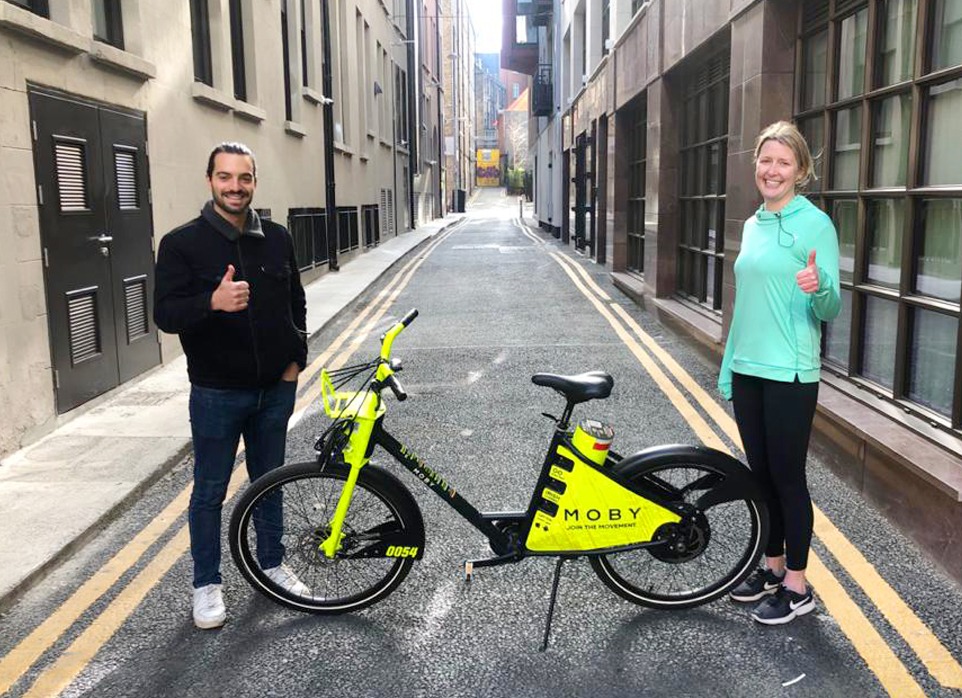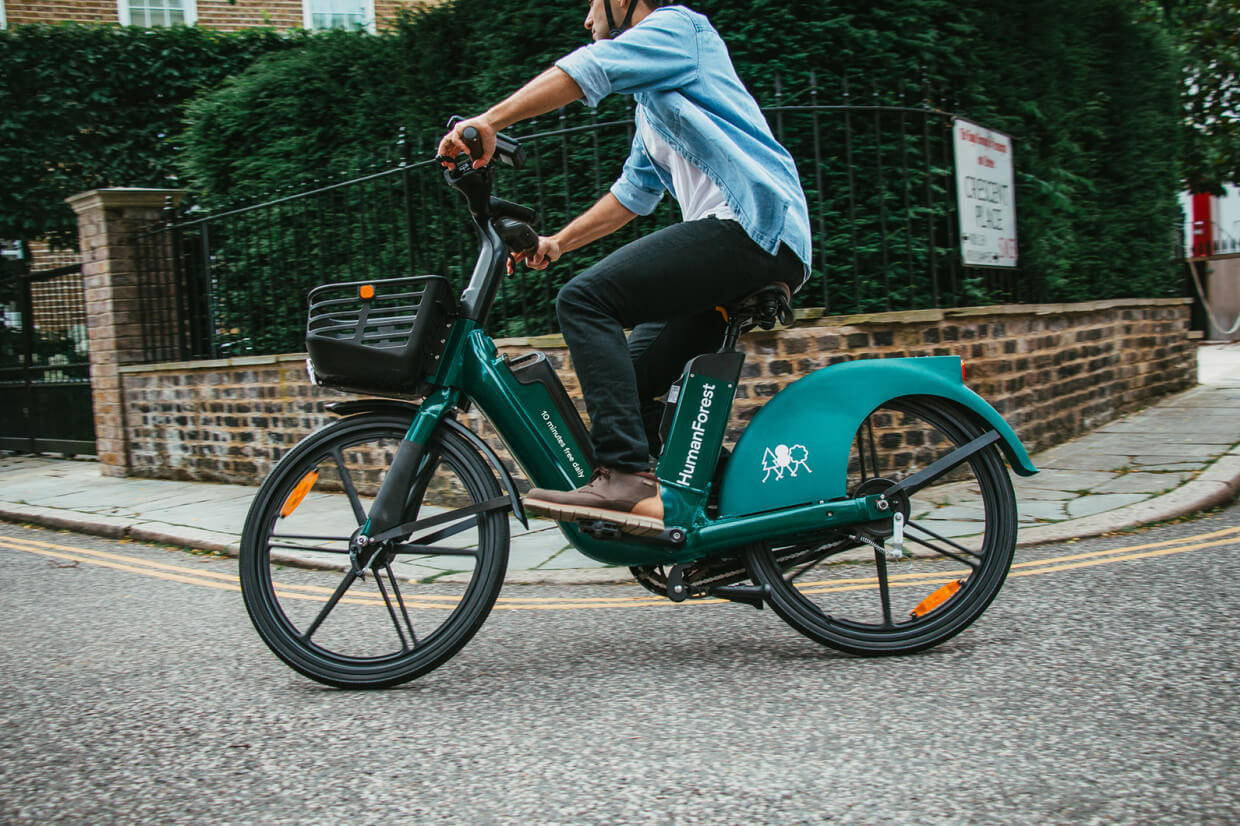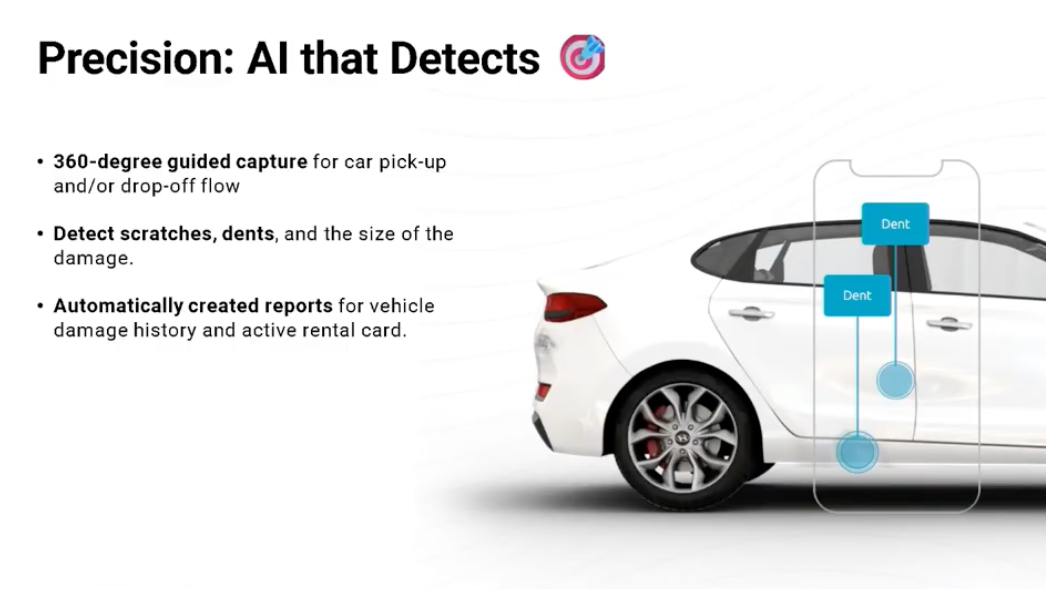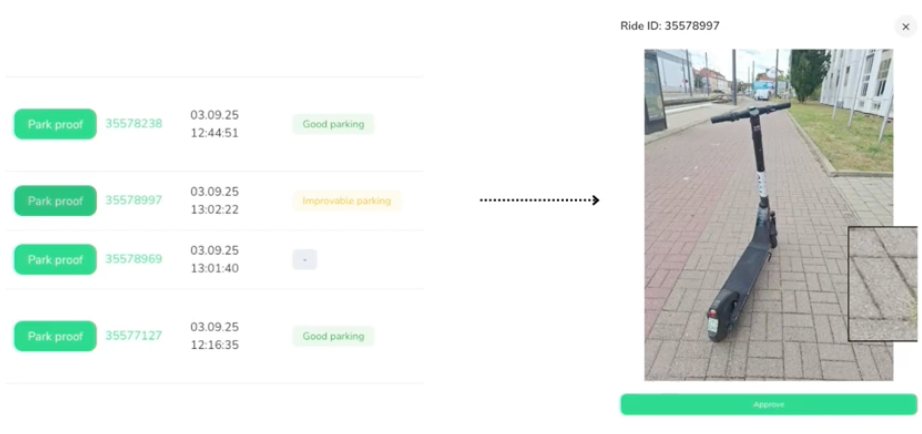
Artificial Intelligence (AI) is revolutionizing various sectors, and micromobility is no exception. By integrating AI into e-scooters, e-bikes, cars and other small vehicles, the industry is becoming smarter, safer, and more efficient. AI’s prowess in data processing, predictive analytics, and machine learning is driving this transformation, making operations more innovative and productive, and setting a bright future for micromobility.
Let's explore how AI is making a significant impact on the micromobility industry through smart parking, dynamic pricing and rebalancing, and damage detection.
From automating routine tasks to providing deep insights through data analysis, AI is reshaping how we navigate urban environments. Its ability to learn from vast amounts of data and make real-time decisions is crucial for developing efficient, sustainable, and user-friendly transportation solutions.
AI in micromobility
Micromobility refers to small, easy-to-maneuver vehicles like e-scooters, e-bikes, and shared bicycles that operate at speeds typically below 25 km/h. The rise of micromobility is driven by the need for convenient, cost-effective, and eco-friendly urban transport. AI helps tackle critical challenges in the micromobility industry, including parking management, pricing strategies, fleet rebalancing, and damage detection. Companies like SWITCH are leading the way by using advanced algorithms to generate synthetic data, predict demand, optimize fleet distribution, and support strategic planning.
3 business problems AI solves
1) Improper parking
Improper parking can clutter sidewalks and create accessibility issues, frustrating many urban dwellers. AI-driven parking analysis provides a practical solution:
- Image Validation: AI modules validate images uploaded by users, ensuring the vehicle is correctly parked. Invalid images require users to retake them.
- Real-Time Monitoring: AI systems analyze live feeds of parking images, allowing operators to quickly address poor parking.
- Behavioral Improvement: Data from AI analysis helps redefine parking zones and penalize repeat offenders, reducing bad parking practices.
- Support Reduction: Accurate parking data significantly decreases the number of support tickets related to parking issues.
Results? Studies show AI parking analysis can drastically improve compliance. For instance, 52% of improperly parked vehicles are correctly re-parked on the second attempt, rising to 82% by the third attempt.
If you're interested in exploring these solutions further, you can read a case study by ATOM Mobility in collaboration with Captur's AI-Powered Photo Verification solution.
2) Dynamic pricing and rebalancing
AI enhances fleet utilization and customer satisfaction through dynamic pricing and rebalancing strategies:
- Predictive Rebalancing: AI predicts where vehicles are needed most, optimizing their distribution across the city, increasing fleet utilization, and ensuring availability.
- Automated Task Management: Ground teams benefit from automated task assignments, streamlining operations and reducing manual workloads.
- Dynamic Pricing: AI adjusts rental costs based on demand, time of day, and location, maximizing revenue and customer retention.
A case study revealed that scooters placed in AI-recommended areas saw a 6% increase in average revenue, and rebalanced vehicles experienced a 10.8% usage increase within 24 hours.
3) Damage detection
Maintaining vehicle condition is crucial for safety and longevity. AI-powered damage detection systems offer a solution:
- 360-Degree Capture: AI guides users through comprehensive vehicle inspections, capturing detailed images from all angles during pick-up and drop-off.
- Damage Detection: AI algorithms detect and assess scratches, dents, and other damages, focusing on types specific to the business’s needs.
- Automated Reporting: The system generates detailed reports on vehicle damage history and rental status, ensuring transparency and facilitating prompt repairs.
Automating damage detection helps operators maintain high safety standards and reduces downtime from manual inspections. Companies such as FocalX streamline the damage detection functionality.
Embracing AI for a smarter future
Integrating AI in micromobility is revolutionizing the industry by enhancing operational efficiency, user experience, and safety. As AI technology continues to evolve, its role in shaping the future of micromobility will grow, driving the industry toward smarter, more sustainable urban transportation solutions.
For micromobility operators, embracing AI technologies is not just an option but a necessity to stay competitive and meet the growing demands of urban commuters. The future of micromobility is intelligent, efficient, and AI-driven.
Join the ATOM Academy
Ready to dive deeper into the world of shared mobility and learn how to use AI to transform your business? Join the ATOM Academy for FREE expert knowledge, practical insights, and innovative strategies that will help you stay ahead in the rapidly evolving micromobility industry. Visit ATOM Mobility to learn more. Let's drive the future of urban transportation together!
Click below to learn more or request a demo.

🚗📲 Whether you're renting out cars, bikes or scooters, the best rental businesses in 2025 are fully digital. No more paper contracts or office keys – just tap, unlock, and go. In our latest article, we explore top apps (like Donkey Republic, MOBY Bikes and Forest) that show what a modern rental experience looks like. Plus, we explain where a full platform like ATOM Mobility fits in when you're ready to scale.
Running a rental or sharing business today means delivering a smooth, digital-first experience. Whether you rent cars, bikes, scooters or other vehicles – users expect to book online, pay, verify identity if needed, unlock a vehicle, and ride or drive without extra friction.
To make that happen reliably, you need good vehicle rental software or platform backing your service. Below are some successful examples of apps and platforms that show how this works and what is possible.
Donkey Republic
Operates in several European cities offering shared bikes and e‑bikes. Users find a bike in the app, unlock it with a smartphone, ride, then park at a designated drop‑off spot and end the rental. Pay‑as‑you‑go, daily rates or memberships are all handled via the app.
MOBY Bikes
Targets electric bicycles and e‑cargo bikes across certain regions, with a “tap‑and‑ride” system that uses its proprietary app for booking, unlocking, and rental management. The platform supports mixed-use fleets (shared bikes, cargo bikes, delivery fleet, even B2B rentals), which illustrates flexibility – useful for operators exploring different business models beyond simple consumer rentals.

Forest
It is a dockless e‑bike sharing operator in London. It runs a large fleet and offers bike‑sharing through a mobile app. The service demonstrates how a relatively simple, dockless rental model can scale at urban level using app‑based rentals, unlocking, and flexible parking.

These examples show how micromobility‑focused services already rely on booking, payment, unlocking and fleet management tech – the same core capabilities needed by any modern vehicle rental business.
What makes these apps work – and what to borrow from them
From these operators you can observe several useful traits that a good rental/sharing software should provide:
- Seamless user journey: crate account in seconds → search → book → unlock → ride/drive → return. Users don’t need paper contracts or to meet staff to get a vehicle.
- Flexible pricing & rental models: per-minute, hourly, daily, subscription, memberships – enables both occasional users and frequent commuters.
- Smart access control and vehicle tracking: unlocking via app or smart lock, GPS tracking, drop‑off in defined zones or docking stations, helps maintain order, reduce theft, and support dockless models.
- Support for different vehicle types: from bikes to e‑bikes and cargo bikes – showing that underlying software can be agnostic to vehicle type, useful if you plan a mixed fleet.
- Scalable fleet operations and maintenance: availability updates, booking history, maintenance logs, geofencing or parking zones – these help manage many vehicles across zones without chaos.
These are exactly the kinds of features you need when you move from small‑scale operation to proper fleet business.
Why to choose ATOM Mobility
If you plan to just test the market or to operate a larger and more complex fleet - multiple vehicle types, multiple cities, or advanced operational requirements - a full-stack platform like ATOM Mobility becomes essential.
ATOM Mobility is designed for operators who need full control over the entire mobility operation: booking flows, unlocking logic, payments, KYC/ID verification, backend administration, fleet analytics, dynamic pricing, and multi-modal rentals across cars, scooters, bikes, and more.
The platform provides a unified backend that supports cars, scooters, e-bikes, mopeds, and additional vehicle types within a single system. Operators can manage bookings, payments, users, smart locks or connected vehicles, fleet health, and city-level scaling without fragmenting their tech stack as the business grows.
This approach offers far greater flexibility than single-vehicle or bike-only solutions and removes the need to migrate systems when expanding into new vehicle categories or markets. Check out the full service here.
How to choose: when to use franchising vs full platform
Join a franchising when you:
- prefer operating under an established brand
- value a clear operational playbook and central support
- want simpler marketing thanks to brand recognition
- are comfortable with limited control over technology and product decisions
- accept franchise fees or revenue sharing in exchange for convenience
- don’t need heavy customization or experimentation
Use a full platform (like ATOM Mobility) when you:
- aim to manage a larger, mixed fleet (cars, scooters, bikes, e-bikes)
- need full backend control (admin, analytics, pricing, reporting)
- require payments, KYC/ID verification, and automation built in
- want freedom to customize booking flows, pricing, and partnerships
- plan to scale across cities or add new vehicle types over time
- prioritise brand ownership and customer relationship control
- want no revenue sharing or franchise fees
There isn’t a one‑size‑fits‑all solution
For simple bike or e-bike fleets, the technology barrier is already low. Joining a franchise can be a fast way to get operations running with minimal setup.
However, operators with long-term ambitions - expanding into multiple vehicle types, scaling across locations, or maintaining consistent service quality - typically outgrow narrow tools. In those cases, a full-stack platform like ATOM Mobility offers the flexibility and control needed to support growth without rebuilding the tech foundation later.
Some operators start small and migrate as complexity increases. Others choose to build on a full platform from day one to avoid future transitions. The right choice depends on how clearly you define your growth path, desired level of control, and operational complexity from the start.

📱AI in shared mobility isn’t a future trend – it’s already here, and for good. From detecting car damage to forecasting demand and verifying parking in real time, operators are using AI to reduce manual work and run more efficient fleets. In this new article, we break down 3 real use cases already live on the ATOM Mobility platform: 👁️ Vision AI, 🔍 Precision AI, 📊 Prediction AI. See how AI is changing shared mobility, and how you can start using it now.
Artificial intelligence is no longer just a trend in mobility. For modern vehicle sharing and rental services, AI is already solving real operational problems and unlocking new ways to grow. At ATOM Mobility, several AI-powered features have already been implemented into live products and tested by operators across Europe.

This article shares three real-world AI use cases that are already helping operators reduce manual work, improve asset control, and better match vehicle availability to demand.
1. Vision AI: Camera-based parking control for micromobility
Micromobility parking continues to be a challenge in cities where dockless vehicles can end up blocking sidewalks, crossings or entrances. Manual checks are costly and often too slow to solve the problem in real time.
ATOM Mobility now uses computer vision to solve this. With Vision AI, riders take a photo when ending their ride. The system analyses the image using a neural network to understand if the vehicle is parked correctly – within a designated zone and without creating obstructions. If not, the app notifies the user and prevents trip completion until the parking is corrected.Each parking photo is automatically tagged as “Good parking”, “Improvable parking” (the user receives guidance on how to improve the parking), or “Bad parking” (the user is asked to re-park).
If the user fails to submit a “Good parking” photo after several attempts, the system will accept the photo with its current tag (“Improvable” or “Bad parking”) and flag it in the dashboard for further customer support review.
This solution has been live with many operators already. It helps reduce complaints, improve compliance with city regulations, and lowers the need for manual reviews.

2. Precision AI: Detecting car rental damages with cameras and machine learning
In traditional car rental, damage inspection is slow, manual, and often inconsistent. With self-service rentals becoming more popular, operators need a smarter and faster way to verify a vehicle’s condition between trips.
ATOM Mobility has integrated AI-powered damage detection using computer vision. Customers scan the vehicle at pick-up and drop-off. The app compares images and flags scratches, dents, or other visible damage with high accuracy. This allows operators to quickly assess responsibility and reduce disputes.
The system helps protect the fleet, lowers repair costs, and adds trust for both users and operators. It’s especially useful for car sharing and self-service rental models where physical handovers are skipped.
3. Prediction AI: Forecasting demand and automating vehicle relocation
One of the biggest cost factors in shared mobility is rebalancing the fleet. If scooters or cars are idle in the wrong location, revenue is lost. At the same time, relocating vehicles manually is expensive and not always efficient.
ATOM’s AI models use historical trip data, usage trends and contextual signals (such as day of the week or weather) to forecast demand and suggest the best relocation zones. This gives operators a map of where and when to move vehicles – improving utilisation and saving time.
The system can even be combined with automated relocation logic, where users are incentivised to park in high-demand areas. This shifts part of the rebalancing cost from operators to riders and keeps the fleet productive.
Why this matters now
AI tools are finally reaching the stage where they can operate reliably, even in complex environments like cities. These examples are not abstract ideas or lab tests. They’re active features helping ourcustomers run leaner, smarter fleets today.
For micromobility operators, Vision AI reduces complaints and ensures regulatory compliance. For car rental providers, Precision AI saves hours of staff time and improves trust. And for both, Prediction AI improves margins by making sure vehicles are where users need them.
What’s up next?
These are just the first steps. AI in mobility will continue to expand with smarter pricing engines, voice-based support, predictive maintenance, and more. But the examples above already prove that even small AI integrations can bring major improvements.
At ATOM Mobility, we continue building these tools directly into our platform so that operators don’t need to develop them in-house. If you want to see how these AI-powered features work in action, get in touch with our team.
AI in shared mobility is not about replacing people. It’s about giving operators better tools to run faster, smarter, and more efficient services.


